Atlantic Monthly Contributors's Blog, page 303
November 7, 2015
The Russian Plane Crash, One Week Later

One week after a passenger plane crashed in Egypt, the investigation into the worst civil aviation disaster in Russian history has become a multinational effort.
Russian and Egyptian investigators are working together to pull information from the plane’s black boxes. The United States is combing through its own intelligence reports and satellite data. The United Kingdom must be too, since on Wednesday it became the first world power to publicly suggest terrorism. It went further on Thursday, when British Prime Minister David Cameron said the crash was “more likely than not” caused by a bomb. President Obama followed him later that day, saying that “it’s certainly possible that there was a bomb on board.”
The cause of the crash of Metrojet Flight 9268 has not yet been officially determined. Moscow has dismissed reports of a terroristic act as speculation. So has Cairo. But the international response—the hurried independent attempts by uninvolved nations to figure out what happened—makes sense in a world where the worst outcome affects not only Russia and Egypt, but also dozens of other nations. A branch of the Islamic State based in the Sinai Peninsula, where Flight 9268 fell, has claimed responsibility for the crash. If that is confirmed, the crash would be the worst terrorist attack on civil aviation since 9/11—and the first by the world’s most violent jihadist organization.
Funerals for the victims began Thursday. Most of the passengers were Russian, flying home from vacation at the Red Sea resort in Sharm el-Sheikh. All 224 on board perished. In the days after the crash, mourners placed flowers, toys, and candles in St. Petersburg’s central square and at Pulkovo Airport, where the plane was due to land.
The latest development in the crash came Friday, when unnamed European investigators who analyzed the plane’s black boxes told French media that the sound of an apparent explosion can be heard on the recordings.
Also on Friday, Russian President Vladimir Putin suspended all flights to Egypt, despite Russian officials’ insistence that it’s too early to know whether terrorism was the cause.
Others have taken similar precautionary steps. On Wednesday, Cameron suspended flights to and from Sharm el-Sheikh for 24 hours and flew a team of British aviation experts to the city’s airport to inspect its security measures. About 1,500 British tourists are expected to return home from the southern Sinai city on Saturday, now that flights have resumed, according to The Guardian. Ireland has instituted a ban on flights to and from Sharm el-Sheikh and in Sinai airspace, in place “until further notice.” Several major European airlines have said they will not fly to the city until a cause is determined.
The Egyptian government has remained resolute in its insistence that a bomb did not bring down the jetliner, calling terrorism theories “premature” and “unwarranted,” according to The New York Times. “The fragile state of Egypt’s economy makes any conclusion of terrorism extraordinarily costly,” explained David D. Kirkpatrick in the Times on Friday. “Sharm el-Sheikh had been a bright spot for the nearly moribund Egyptian tourism industry at a time when a deep deficit in its balance of trade has forced Egypt to the brink of a currency crisis.” Egypt is a popular wintertime tourist spot for Russians; 3 million visited Egypt last year, according to the Associated Press.
Egypt’s foreign ministry announced Friday that the country’s Civil Aviation Authority would hold a press conference on the plane crash on Saturday. It has since been postponed.









Body Cameras and The Death of a 6-Year-Old Boy

All of it was filmed. The police chase of an SUV after dark on a weeknight. The shots fired. The driver, struck in the head. His son, 6 years old, shot dead in the front seat.
The fatal shooting of Jeremy Mardis in Marksville, Louisiana, on Tuesday was captured on a body camera worn by one of the four police officers present at the scene. And it was that video footage that led in part to the decision to charge two of them with second-degree murder on Friday night.
The footage, Colonel Mike Edmonson of the Louisiana State Police told reporters, was “extremely disturbing, and it is partly why we’re here tonight with these charges.”
“I’m not gonna talk about it, but I’m gonna tell you this,” Edmonson said. “It is the most disturbing thing I’ve seen and I will leave it at that.”
Louisiana State Police arrested the officers, Norris Greenhouse Jr. and Derrick Stafford, on charges of second-degree murder and attempted second-degree murder. Mardis’s father, Chris Few, remains hospitalized. The New York Times reported Mardis, a special-needs student who had recently transferred to his new school in Louisiana from Mississippi, was shot several times in the head and chest. A forensic report on how many guns and bullets were fired will be released next week, with autopsy results to follow in eight weeks.
“That little boy was buckled in the front seat of that vehicle, and that is how he died,” Edmonson said.
Officials have not said what led to the police pursuit of the car. Initial reports suggested that Few fled after officers tried to arrest him on an outstanding warrant. Edmonson refuted that claim Friday, according to The Washington Post.
Police departments across the United States are increasingly testing and using body-worn cameras—small, usually pager-sized devices that are clipped onto an officer’s uniform. The technology quickly emerged as a potential new method of accountability in fatal encounters between law enforcement and civilians, especially black men, following the shooting death of 18-year-old Michael Brown in Ferguson in August 2014. Supporters of body cameras say their mere presence can force both officers and civilians to change their behavior. The devices, they say, benefit both sides in policing: They help protect the public from police misconduct, and they help protect police from false accusations.
Research backs this up. A yearlong experiment in Rialto, California, in 2013, found that police officers who weren’t wearing cameras were twice as likely to use force as those who were. It also found that citizen complaints against police dropped 80 percent. In late 2014, President Obama announced that the government would spend $75 million over three years to distribute 50,000 body cameras to police departments across the country, saying that “evidence shows that body-worn cameras help strengthen accountability and transparency.”
Take the case of Samuel DuBose, a 43-year-old Cincinnati man who was shot dead in July by officer Ray Tensing, who stopped DuBose because his car was missing its front license plate. The Ohio prosecutor handling the case said he probably would have believed Tensing’s version of the story if the encounter wasn’t captured by a body camera—but it was. “He purposely killed him,” the prosecutor said, in announcing Tensing would be charged with murder and voluntary manslaughter. “He should never have been a police officer.”
The video footage of DuBose’s death was released to the media and the public. But it’s unclear whether the footage of the shooting of Jeremy Mardis will be. While there’s a growing consensus that body cameras are necessary and important, there is little agreement over whether and when officers, the public, or the press should see the footage they capture. My colleague Robinson Meyer broke down the debate in August:
If a police officer has a hostile encounter with a teenager on the street, but neither of them are badly injured, does the teenager have a right to see video of the incident recorded from the officer’s body camera? If an officer is invited inside the home of a domestic-violence victim, will that victim be able to tell the cop not to record?
And, most importantly, if someone is killed in an altercation with an officer, could that officer watch the video before testifying to a grand jury? Because if so, critics say, that cop would be able to alter his or her account of the event to match what was on video—even if their initial account was wildly different.
Hanging over all these hypotheticals is a question about what body-camera footage is: Is it a public record created by the government and available to the people, or is it personally identifiable information that’s confidential and off-limits?
In the case of a young boy who just started first grade, body-camera footage gave prosecutors enough to take two officers to court.









Daria and the Truth Behind ‘Zola’: The Week in Pop-Culture Writing

How Daria Shaped a Generation of Women (Especially This Black Lady)
Phoebe Robinson | Vulture
“A show in the ’90s was able to understand that even though Jodie and Daria are similar in a lot of ways, they are different because of race, and as a result, Jodie has much a different view of the world, and the world has a much different view of her. That, my friends, in a nutshell, is the intersectionality experience, and the fact that Daria got it was certainly not expected at the time.”
The True Story Behind ‘Zola,’ the Epic Twitter Story Too Crazy to Be Real
Caitlin Dewey | The Washington Post
“No one actually tried to jump off a fourth-floor balcony, and no one ever got shot in the face. But in some ways, the true story of what happened to two young women in a Tampa hotel is even ‘crazier,’ quote-unquote, than the story that captivated the Internet last week.”
Spike Lee Sounds Off on Chi-raq, Gun Violence, and Rahm
Bryan Smith | Chicago Magazine
“One of the biggest criticisms of Do the Right Thing was that Spike didn’t have the answer for racism or prejudice at the end. So I hope you don’t think that Spike has answers for all this stuff. We do have some, but it’s not like A, B, C, D, you do this and everything will be all right. It’s not that simple.”
Why So Many Punks Grow Up to Be Cowboys (and Cowgirls)
Kenneth Partridge | Pitchfork
“Back in the ‘no future’ early days, punk didn’t offer a great retirement plan. After a record or two of three-chord raging, you could stay the course, turn pop, get clever, or check out altogether, like Sid Vicious or Darby Crash. There were pros and cons to all of these. Now, you can grab a hat and an acoustic guitar and ride off into the sunset.”
The Mother of All Questions
Rebecca Solnit | Harper’s Magazine
“One of my goals in life is to become truly rabbinical, to be able to answer closed questions with open questions, to have the internal authority to be a good gatekeeper when intruders approach, and to at least remember to ask, ‘Why are you asking that?’ ... But on the day of my interrogation about having babies, I was taken by surprise (and severely jet-lagged), and so I was left to wonder—why do such bad questions so predictably get asked?”
‘I’m So Excited! I’m so Excited! I’m so … Scared!’: The Lasting Impact of Jessie Spano, Caffeine Pills, and TV’s Greatest Meltdown
Michael Andor Brodeur | Thrillist
“So pure, total, and overwhelming were the cheery, chummy, good-time vibes at Bayside that it amounted to something like a crushing, unforgiving vacuum of cultural space. Nothing from our world could survive the journey into its swirling vortex of stonewashed suck, and, once there, surely, nothing could ever escape. Or so we thought.”
Where Are All the Black NBA Coaches? Examining a Sudden, Silent Disappearance
Howard Beck | Bleacher Report
“There is one broad trend that partially explains the racial shifts: NBA teams, now more than ever, are seeking unconventional hires—college coaches, first-time coaches, foreign coaches, broadcasters, former video coordinators—and turning away from the standard pool of former players-turned-coaches, a pool that is, by definition, predominantly black.”
Books Are Dangerous: Reading Should Not Carry a Health Warning
Frank Furedi | Aeon
“It is not for nothing that reading was always feared throughout history. It is indeed a risky activity: Reading possesses the power to capture the imagination, create emotional upheaval, and force people toward an existential crisis. Indeed, for many it is the excitement of embarking on a journey into the unknown that leads them to pick up a book in the first place.”
Against Subtlety
Forrest Wickman | Slate
“To be clear, I’m not saying that all art must be unsubtle. (Though a lot of it would be better if it were.) Certainly there will always be people whose taste simply runs toward the subtle, and de gustibus, etc. Similarly, there will always be creators whose visions tend toward the understated. Even I enjoy some variety. But it’s when subtlety is held up as an unquestioned virtue that it does the most damage.”
What We Think About When We Run
Kathryn Schulz | The New Yorker
“Most runners run to achieve either or both of these conditions as often as possible—to provoke a kind of Cartesian collapse, mind and body suddenly in anguished or glorious collusion. And, most of the time, we fail. The body twinges and hitches and aches; the mind fusses and fidgets. What is it all for? What was it all about?”









Writers Shouldn’t Romanticize Rejection

Last month, the Jamaican writer Marlon James won the 2015 Man Booker Prize for Fiction for his riveting novel, A Brief History of Seven Killings. A spate of articles came out documenting his win, noting the fact that the 44-year-old James was the first Jamaican to win the prize. One article by The Guardian however, focused on the fact that the manuscript of James’s first novel, John Crow’s Devil, was rejected close to 80 times before finally being published in 2005. It also discussed how James had given up when faced with such vast rejection. “There was a time I actually thought I was writing the kind of stories people didn’t want to read,” he said, going on to describe how his desperation drove him to destroy his own work. “I actually destroyed the manuscript, I even went on my friends’ computers and erased it.”
This article was shared among writers on social media with exclamations of, “don’t give up!” and “keep at it!” But this reaction reminded me of the exuberance of many when Obama was elected President: To them, his election demonstrated the country had become blissfully “postracial,” despite all evidence to the contrary.
Time and time again, the literary establishment seizes on the story of a writer who meets inordinate obstacles, including financial struggles, crippling self-doubt, and rejection across the board, only to finally achieve the recognition and success they deserve. The halls of the literary establishment echo with tales of now-revered writers who initially faced failure, from Stephen King (whose early novel Carrie was rejected 30 times before being published), to Alex Haley (whose epic Roots was rejected 200 times in eight years). This arc is the literary equivalent of the American Dream, but like the Dream itself, the romantic narrative hides a more sinister one. Focusing on how individual artists should persist in the face of rejection obscures how the system is set up to reward only a chosen few, often in a fundamentally unmeritocratic way.
What are we meant to make of the fact that James’s manuscript was rejected 80 times? Sadly, this phenomenon isn’t that uncommon. In fact, there’s a website dedicated to bestsellers that were initially rejected. Was it lack of imagination on the part of those publishers? Was it unconscious bias against a new and unfamiliar narrative—one that they didn’t regard as “mainstream?” Or was it a complex business decision based on multiple factors? As an emerging writer of color, I’m no longer inspired by this narrative. I don’t see much cause to celebrate when writers of James’s profound talent are roundly rejected in the course of normal business.
I’m weary of articles about beloved novels that almost didn’t exist and esteemed writers who almost walked away for good. And while I’m genuinely happy and grateful for the voices that make it through to be published and am thrilled when they receive well-deserved rewards and recognition, I know they are the slim exceptions, and that this is particularly true of writers of color.
In 2012, the writer Roxane Gay wrote a piece entitled “Where Things Stand,” which examined how many books by writers of color are reviewed by the pivotal New York Times Book Review. She found that in 2011, nearly 90 percent of the books reviewed were by Caucasian authors. Africans and African Americans only accounted for four percent; Asians, Asian Americans, and South Asians together also only accounted for four percent; and Middle Eastern and Hispanic authors each accounted for a paltry one percent. Gay contrasted this with the fact that according to the 2010 U.S. Census, Caucasians only accounted for 72 percent of the population. Although she acknowledged that her examination was imperfect and limited in scope, Gay noted that it still pointed out glaring disparities for writers of color:
Writers deserve that same fighting chance regardless of who they are but here we are, talking about the same old thing—these institutional biases that even by a count of 2011 data, remain deeply ingrained.
Three years later, I remain perplexed by a system that creates the conditions by which manuscripts that will go on to be lauded are first broadly rejected. While other sectors have certainly overlooked brilliant new ideas and missed opportunities for innovation, this fact isn’t usually romanticized or celebrated. In other sectors this level of oversight would be called “a system failure,” or “inefficiency,” or “failure to innovate.” And policies and practices would be put into place to try to prevent this from happening in the future.
But I don’t see those kinds of self-critiquing evaluative discussions or major efforts to dismantle such systems in the literary world. Just last month, Publishers Weekly’s annual field survey confirmed that 89 percent of the publishing sector workforce is white–exactly the same as the year before. Instead, the focus continues to be on individual persistence against myriad, intangible barriers, rather than on the role of the system in creating and perpetuating many of those barriers, thereby putting the full burden on writers.
These barriers aren’t just unique to the American publishing industry. Earlier this year, a report came out about the publishing prospects for writers or color in England. The report, according to an article in The Guardian, “found that the ‘best chance of publication’ for a black, Asian, or minority ethnic (BAME) writer was to write literary fiction conforming to a stereotypical view of their communities, addressing topics such as ‘racism, colonialism or post-colonialism as if these were the primary concerns of all BAME people.’” And like the Publisher’s Weekly survey, the report also confirmed the lack of diversity within the U.K. publishing sector.
“Is my voice somehow going to be somehow alien or unrecognizable to the person I am submitting it to?”One of the most curious aspects of this mode of operation is that it gives rise to a secondary narrative: that of discovery. Instead of dismantling these barriers, literary power players emphasize how they “discovered” an author, even though that author was knocking at the door of the literary establishment the whole time, just waiting to be seen and let in.
These barriers are steep for all writers, but they are even more daunting for writers of color and other underrepresented writers who write narratives that revolve around themes of identity. Not only is it harder for writers of color to get published, but when rejecting our work, publishers tell us that what we’re writing about is too narrow and niche and won’t appeal to mainstream audiences. It’s hard not to perceive this as both a rejection of the relevance of our work as well as ourselves. And for many writers of color who face barriers in other parts of their life due to their identity, the rejection is compounded, forcing some to put down their pen and give up their voice.
In a recent NPR article about the need for greater diversity in the publishing sector, the writer Daniel Jose Older describes the formidable obstacle faced by writers of color in getting past gate-keeping publishers and agents, who are predominantly white:
You have to always be conscious of that. Am I going to be submitting something that is going to put the person on the defensive? Is my voice somehow going to be somehow alien or unrecognizable to the person I am submitting it to?
The article goes on to discuss how Corona, a novel written by the author Bushra Rehman about a Pakistani Muslim girl from Queens was rejected by major publishers. “That was the one comment that I remember, that there is not an audience for this work.” Thankfully, Rehman persisted and Corona was published by a small independent press.
But the impact of this publishing system failure goes beyond the writer. It means readers lose vital stories that make up the broader contemporary narrative. This isn’t just unfortunate, but also perilous, as explained by Chimamanda Ngozi Adichie in her TED Talk, “The Danger of a Single Story”:
It is impossible to talk about the single story without talking about power. There is a word, an Igbo word, that I think about whenever I think about the power structures of the world, and it is nkali. It’s a noun that loosely translates to ‘to be greater than another.’ Like our economic and political worlds, stories too are defined by the principle of nkali: How they are told, who tells them, when they’re told, how many stories are told, are really dependent on power.
Just weeks ago, the author Mira Jacob was asked to give the keynote speech at a Publisher’s Weekly event. She was speaking about her experience being published as a writer who’s a woman of color, but ironically her speech went largely unheard, for technical and non-technical reasons. Adapting her remarks for a Buzzfeed post, Jacob said, “American audiences are capable of so much more than some in your industry imagine. And if we can break that down to what I really mean, I mean this: White Americans can care about more than just themselves. They really can. And the rest of us? We are DYING to see ourselves anywhere.” Jacob goes on to explain why it makes good business sense to publish books that reach and reflect untapped audiences. “Because all of us are so ready to talk about the world we live in. We are ready to have a publishing industry that is of that world.”
So, the next time a brilliant writer wins an award only after being rejected countless times, I will celebrate the writer and their persistence and victory against the odds. But I will continue to hold out hope that the winds of change will shift the odds in favor of more writers, creating a victory for everyone who loves new, untold stories.









#ActualWorst Round One: Andrea Harrison vs. Elsa Mars
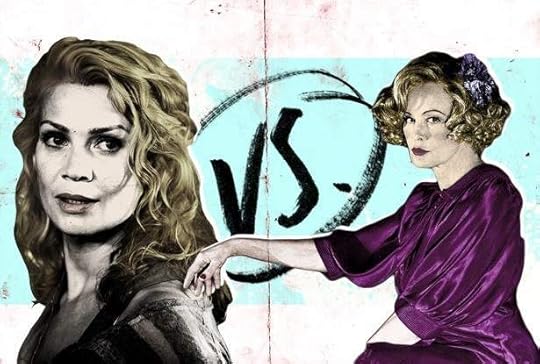
Throughout the month of November, we’re soliciting readers’ help to definitively answer an age-old question: Who is the actual worst character on television? We reviewed your submissions, did our own research, and came up with a list of 32 characters across four different categories, who’ll go head to head over the next four weeks until one of them is crowned as the most despicable, unlikeable, flat-out awful (fictional) person on the small screen.
See the bracket in its entirety here.
The Case for Andrea (The Walking Dead)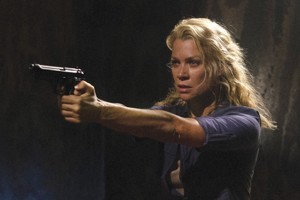 AMC
AMC Why this character is the actual worst: At every crucial decision point she encounters, Andrea is incapable of making the right call. She’s the absolute worst judge of character, throwing her lot in with the untrustworthy Shane and then the tyrannical Governor, and changing course only when it’s far too late. On paper, Andrea should be a hero: she’s a key member of the survivors fighting the zombie apocalypse and a crack shot with a sniper rifle. But she’s just too infuriating to root for.
Worst moment/s: At a crucial point in the third season, the sword-wielding hero Michonne has a chance to kill the Governor—and Andrea stops her, pointing a gun at her head and making her flee. The Governor, in case you didn’t know, is a brutal psycho who executes anyone who disobeys with his rule and keeps their heads in jars. Andrea eventually realizes the mistake she’s made allying with him, but only when he locks her in a room with a zombie to kill her.
Worst trait/s: She’s far too trusting. Andrea also hooks up with the villainous Shane at his lowest moment, and some of her friends end up dying at zombie hands when she supports his misdeeds.
Redeeming moments/qualities: Andrea is, at heart, a good person—she just makes a lot of mistakes, and it’s easy to blame the show’s writers for repeatedly using her to justify nasty turns of plot. In the first season, she loses her sister to zombies, which informs every decision she makes after that. So, it’s easy to sympathize, but hard to love Andrea all the same. —David Sims
The Case for Elsa (American Horror Story: Freak Show) FX
FX Why this character is the actual worst: While running her “Cabinet of Curiosities” in AHS season four, Elsa is equal parts protective mother and murderous narcissist. These two personas make her the kind of woman who would take in society’s most vulnerable—such as a sweet, physically tiny woman, or a man born with shortened upper limbs—only to threaten their lives if they get in the way of her fame. There’s something especially grotesque about a person who behaves maternally only to betray the love and trust of her “children” for a vague chance of stardom.
Worst moment/s: When she accidentally-on-purpose stabs her secret lover Paul in the gut after strapping him to a spinning wheel. Later, as his condition worsens, Elsa lies about having called an ambulance. She also secretly sells the twins, Dot and Bette, to a serial killer because she thinks they’re stealing her spotlight.
Worst trait/s: She’s the World’s Worst Surrogate Mother, but it’s her accent that makes Elsa unbearable to watch. Her German lilt strains at some echoes of Old World glamour, but rendered in Jessica Lange’s trademark AHS breathiness (why she is always whispering?!), it makes every line of dialogue a struggle to digest.
Redeeming moments/qualities: Her wistful, aging-starlet performance of Lana Del Rey’s “Gods and Monsters” is one of the few truly charming moments of American Horror Story: Freak Show. —Lenika Cruz









#ActualWorst Round One: Jeremy Jamm vs. Fitzgerald Grant
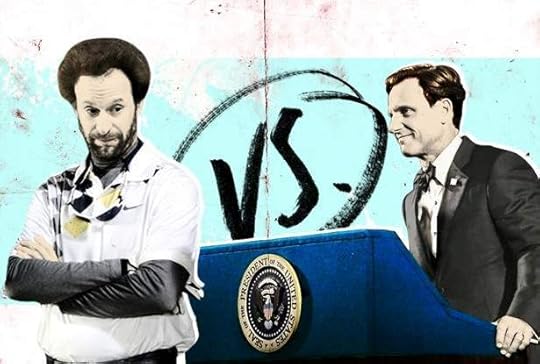
Throughout the month of November, we’re soliciting readers’ help to definitively answer an age-old question: Who is the actual worst character on television? We reviewed your submissions, did our own research, and came up with a list of 32 characters across four different categories, who’ll go head to head over the next four weeks until one of them is crowned as the most despicable, unlikeable, flat-out awful (fictional) person on the small screen.
See the bracket in its entirety here.
The Case for Jamm (Parks and Recreation)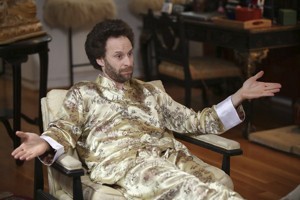 NBC
NBC Why this character is the actual worst: An orthodontist by trade and a lover of satin bowling jackets by nature, Jeremy Jamm is best known as Leslie Knope’s loyal opposition on the Pawnee City Council. In that capacity, he is effectively an agent of chaos: He tries to defeat Leslie’s (usually extremely sensible) initiatives simply to keep progress from coming to Pawnee. You could look at him as a ridiculous rendering of the Tea Party caucus, or of Congress itself, or really of anyone who sees “compromise” as a kind of surrender: Stupidly obstinate and reflexively arrogant, he is a one-man proponent of the theory of Jamm Exceptionalism. Which is another way of saying that Jeremy Jamm is pretty much a distillation of everything that is currently wrong with the American political system.
Worst moment/s: Any time he uses the phrase “you just got Jammed.”
Worst trait/s: His weird, and mostly unexplained, obsession with defeating Leslie—an obsession that often borders on creepiness. (Remember when Jamm literally stink-bombed Leslie’s wedding, just because he could?)
Redeeming moments/qualities: None. —Megan Garber
The Case for Fitz (Scandal)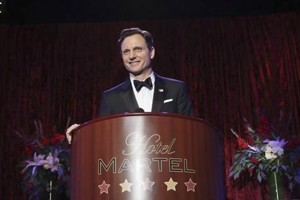 ABC
ABC Why this character is the actual worst: It’s impossible to beat Linda Holmes’s case for why Fitz is the worst, or Alyssa Rosenberg’s, or Kid Fury’s. Let’s just recap thusly: Fitz is an overprivileged, murderous, man-shaped infant whose libido dictates his foreign policy. As punishment for manipulating the engines of democracy to get him elected, his friends and associates have had to spend his presidency coping with his soul-deep corruption, petty jealousies, and severe allergy to anything that looks like accountability. He has, essentially, everything he’s ever wanted, yet he insists on more, thereby ruining the lives of everyone he says he loves.
Worst moment/s: Sending American troops to war in a bid to save Olivia’s life. Going to the hospital to visit an old friend about to die from cancer, just so he could murder her instead. The fact that he cheated on his wife with at least two different women barely even rates a mention in the long catalogue of Fitz’s sins.
Worst trait/s: He’s one of the richest, most powerful people in the world, with two gorgeous women vying for his affections. Yet this is his only expression.
Redeeming moments/qualities: Olivia and Mellie both out-league Fitz, but he’s nice to look at, preferably without sound/his shirt. —Matt Thompson









#ActualWorst Round One: Jonah Ryan vs. Matt Bevers
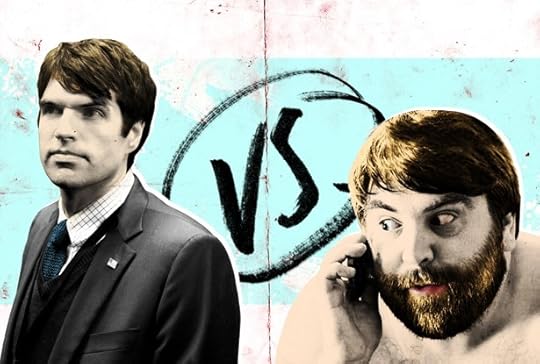
Throughout the month of November, we’re soliciting readers’ help to definitively answer an age-old question: Who is the actual worst character on television? We reviewed your submissions, did our own research, and came up with a list of 32 characters across four different categories, who’ll go head to head over the next four weeks until one of them is crowned as the most despicable, unlikeable, flat-out awful (fictional) person on the small screen.
See the bracket in its entirety here.
The Case for Jonah (Veep)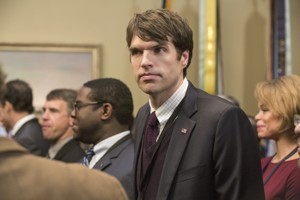 HBO
HBO Why this character is the actual worst: Pretty much all you need to know about Jonah is that he describes himself as the “go-to-guy for all things White House.” Oh, except, there's one more thing to know: He is an assistant. Jonah—arrogant, but with absolutely zero cause—is comically self-aggrandizing. He is the organization kid grown up and in a position of (relative) power. Had Joseph Campbell focused his studies on the mythic trope of “The Buffoon,” Jonah would probably have been the subject of his analysis. Jonah is Dwight Shrute, basically, only with many more sweater vests and much less self-awareness.
Worst moment/s: Jonah’s nemesis, Dan, discovers that Jonah has been running an undercover gossip site in which, among other things, he posted embarrassing photos of the VP’s staff and leaked privileged information. Its nom de blog is “West Wing Man.” After Jonah is fired for it, he screams, “I’m going to be back as the fucking President! Jonah Ryan, 2026!” And then he founds a vlog. He names it “Ryan-tology.” Ugh.
Worst trait/s: Let’s let Jonah do the thing he loves most: speaking for himself: “It’s tremendously exciting for me to have been given such a vital role at such a young age. When I stop to think about it, it literally blows my mind. I think pretty much everyone in DC must be jealous of me. But I’m trying not to get too big-headed about my success.”
Redeeming moments/qualities: Jonah is an unintended force for community, in that everyone on Veep—regardless of party or position—unites to mock him. He has been called “the world’s biggest single-celled organism,” “Jack and the Giant Freak-stalk," the “Jolly Green Jizzface,” and “an early draft of a man, where they just sketched out a giant, mangled skeleton but they didn’t have time to add details, like pigment or self-respect.” —Megan Garber
The Case for Bevers (Broad City) Comedy Central
Comedy Central Why this character is the actual worst: Ugh, Bevers, whyyyyyy. Why do you have to ruin everything? Why do you have to be so gross? Why do you have to be such a freeloader? Why do you have to be so Bevers?
Worst moment/s: Nothing, and I mean nothing, beats the great shoe-pooping incident of season one, episode seven. Not even the time Bevers stupidly screwed up the one favor he could have done for Abbi—helping pick up her crush’s mail from that weird warehouse on North Brother Island.
Worst trait/s: Bevers has no boundaries. None. And he’s as clueless as he is shameless. He masturbates in the living room of an apartment where he does not live. He tries to whip it out at parties. He eats all of Abbi’s food—including ice cream while mostly naked in her bed when she's not home. And he POOPS IN HIS SISTER’S SHOE at a party, then lets Abbi take the fall for it in front of her crush. As Abbi put it to him: “You have a way of tainting everything I love.”
Redeeming moments/qualities: Even though everything Bevers touches turns into a disgusting bodily fluid, he actually means well. Bevers almost (chokes back vomit) has a certain sweetness to him. Which doesn’t make him any less revolting, but may count for something. Then again, ugh, Bevers. —Adrienne LaFrance









#ActualWorst Round One: Carl Grimes vs. Marnie Michaels
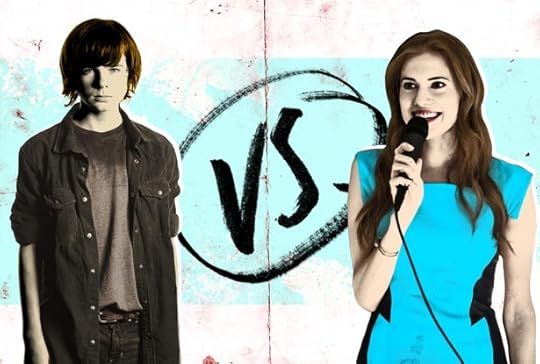
Throughout the month of November, we’re soliciting readers’ help to definitively answer an age-old question: Who is the actual worst character on television? We reviewed your submissions, did our own research, and came up with a list of 32 characters across four different categories, who’ll go head to head over the next four weeks until one of them is crowned as the most despicable, unlikeable, flat-out awful (fictional) person on the small screen.
See the bracket in its entirety here.
The Case for Carl (The Walking Dead)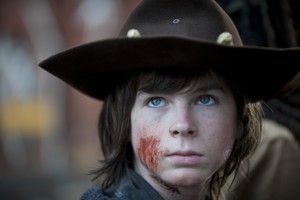 AMC
AMC Why this character is the actual worst: Children mostly get a pass after the zombie apocalypse. And Carl’s been through a lot—his father’s disappearance, his mother’s grisly passing, his own brush with death. But over the years, Carl’s squandered most of the goodwill his tender age affords him. In the comic-book version of The Walking Dead, Carl spurs his father’s conscience: Rick is motivated by a desire to safeguard his son’s innocence, to demonstrate a moral approach to a corrupt world. But AMC’s Carl is more like Rick’s id, mimicking and exaggerating the sheriff’s worst tendencies, such as his showy, misguided machismo and his (related) penchant for internalizing his distress rather than communicating about it. Even as he matures, Carl makes you worry who he’ll become if he grows up.
Worst moment/s: Probably the time he coldly shot and killed the soldier from Woodbury who was apparently trying to surrender his gun. But then there was the time he teased a seemingly immobilized zombie until it got loose, came after him, and killed sweet, solid Dale instead. Oh, and don’t forget about the time he mocked a grieving mother for believing her daughter was in heaven.
Worst trait/s: Confuses “having a gun” with “being an adult.” Thinks the most responsible action in most circumstances involves killing someone. Inherited his father’s fashion sense.
Redeeming moments/qualities: Even though his bravery is often just stupidity in disguise, Carl is genuinely brave. He may be fully or partially responsible for the deaths of several characters, but he’s also stepped in to save the lives of a few, including his father. —Matt Thompson
The Case for Marnie (Girls) HBO
HBO Why this character is the actual worst: When people use “pretty girls” as an epithet, they’re talking about girls like Marnie Michaels. She’s a high-strung, annoying perfectionist who jumps to judge others, while her own life is a professional and moral mess. She manipulates men into having sex with her out of insecurity, including at least two of her best friends’ ex-boyfriends. Worst of all, she’s fake, offering false-toned apologies and always performing for those she’s trying to impress.
Worst moment/s: Being drawn in by the artist Booth Jonathan with the worst pick-up line in all of history; singing a ballad-version of Kanye West’s “Stronger” at her newly successful ex-boyfriend’s work party to get his attention; every time she sleeps with someone else’s boyfriend. And: Marnie and Desi.
Worst trait/s: She’s taken with fame, flattered easily, and willing to make a jerk of herself to win approval—mostly from (really lame) men.
Redeeming moments/qualities: In spite of herself, Marnie can be generous. She’s the first of the girls to be really patient with Shosh; she pays Hannah’s apartment bills. They’re rare moments of non-self-absorption, but they’re redeeming. —Emma Green









November 6, 2015
All Hail Disco Coldplay

At some point, it’s typical for rock bands who’ve conquered their genre to dabble in dance. The Rolling Stones did it, the Clash did it, U2 did it, Arcade Fire did it. Now Coldplay have done it, with a gloriously absurd, “Get Lucky”-aping new single called “Adventure of a Lifetime.” Some fans have reacted in the manner of many others whose guitar gods suddenly embraced funk bass and handclaps. A sampling of YouTube comments: “Goodbye, good Coldplay. Your Rock/AltRock Phases will be missed.” “coldplay is a pop band now :/.” “it just sounds like Coldplay collab with some independent EDM producer.”
To casual consumers or active haters of the band, these protests will sound a bit hilarious. When most people think of Coldplay, they do not think capital-R Rock ‘n’ Roll. They think about Chris Martin’s mushy vocals, or about arrangements meant for teary montages on TV dramas. They think about four guys covered in rainbow confetti. Coldplay ditch classic guitar music’s aggression and horndogging, and even indie’s restraint and cleverness, for open weeping, pining, New Aging; the result is that rock culture has about the same contempt for them as it once did for Saturday Night Fever. In fact Coldplay probably should have been a disco band all along.
They’re pretty good as one now. When Daft Punk’s Random Access Memories disrupted the pop conversation a few years back, it did so not only by resurrecting Studio 54-era style, but also its lushness. Coldplay get this. Why wouldn’t they? The band’s career has been a years-long seminar in the potential of the studio as an instrument; their various reinventions have seen them polishing up old genre elements to sound bell-clear, sleek, shimmery. X&Y is the best sounding ambient-space-rock album anyone could ask for; Viva la Vida is the best sounding fake-revolution on CD; “Adventure of a Lifetime” is the best sounding psychedelic four-on-the-floor document of life after conscious uncoupling imaginable.
The squiggling guitar pattern that opens it up is a classic Coldplay sound, fey and high and ever-so-goosebump-making and totally recycled from something they’ve made before (in this case, “Strawberry Swing”). The music that follows is a little more interesting than the work of nu-dance-rockers like Walk the Moon, who’ve been kind enough to hold the band’s spot in the charts in the past few years. With the trippily mirrored single art, that spiraling guitar, and the looped chanting throughout, it’s clear that Coldplay are interested in the spiritual potential of dance music’s repetitive nature—they want to hypnotize as much as they want to make feet move. The shrill, distracting riff also makes clear that unlike most real disco, they’re not trying to be sexy.
The song becomes more poignant in the context of GOOP.As for the lyrics, they’re about as embarrassing as always. But this particular song can become more poignant than what’s on the page, if you want it to evaluate it in the context of GOOP. The unraveling of Martin’s marriage to Gwyneth Paltrow begat Coldplay’s 2014 album Ghost Stories, the first time in the band’s career that it wildly missed the target of creating music that people want to listen to. Its songs were almost trollishly quiet and defeated-sounding, often free of drums or sticky hooks (except for on the band’s most shameless hit yet, the Avicii-assisted “Sky Full of Stars,” which that YouTube commenter who just accused Coldplay of selling out to EDM must be too young to remember).
The contrasts couldn’t be starker between that Coldplay period and “Adventure of a Lifetime,” the first single off of a “free and happy” album that’s supposedly Coldplay’s last and definitely will feature Beyoncé. Martin’s singing to some mystical woman who makes his heart beat fast, and the chorus—weaker than Coldplay's biggest hits, but still likely to lodge in the brain—has him proclaiming that he’s “alive again!” If, as it’s been recently argued, subtlety’s no virtue, then the fact that this proclamation is accompanied by a thump-thump in the rhythm section should be celebrated—perhaps with one hand on the hip and another pointed diagonally toward the sky.









How Egypt Became Russia’s Top Tourism Destination

On Friday, as my colleague Krishnadev Calamur reported, Russia suspended all flights to Egypt while investigators move to determine whether a bomb brought down a plane of Russian tourists in Sinai last weekend.
This is particularly bad news for Egypt. Prior to the crash—which now looks increasingly less mysterious—Russia and Egypt were enjoying a renaissance of political and economic ties. Russian President Vladimir Putin and Egyptian President Abdel Fattah el-Sisi have a strongman bro-ship reminiscent of the days when Gamal Abdul Nasser and Nikita Khrushchev were diverting the Nile together.
During Sisi’s visit to Moscow in August, the third since Sisi took power in 2014, the two men discussed creating a free-trade zone and building a nuclear power plant in Egypt. Putin was also the first major head of state to visit Egypt since the reign of Sisi began.
With the ruble buckling under the weight of Western sanctions and low oil prices, Russian tourists have been eschewing Italy and Spain to flock to Egypt, where Russian currency still holds up well—and Russian visitors enjoy ease of travel. According to the AP, three million Russian tourists visited Egypt last year, making up one-third of all visitors to the country in 2014. Rosstat, Russia’s statistics bureau, adds that nearly 20 percent of all Russians traveling abroad went to Egypt in the first half of this year.
These are huge numbers for Egypt, which hasn’t seen its tourism numbers fully rebound since Egyptian leader Hosni Mubarak was deposed in 2011 during the early days of the Arab Spring. With carriers and countries now limiting travel in the wake of last week’s crash, those numbers may crater again.









Atlantic Monthly Contributors's Blog
- Atlantic Monthly Contributors's profile
- 1 follower



